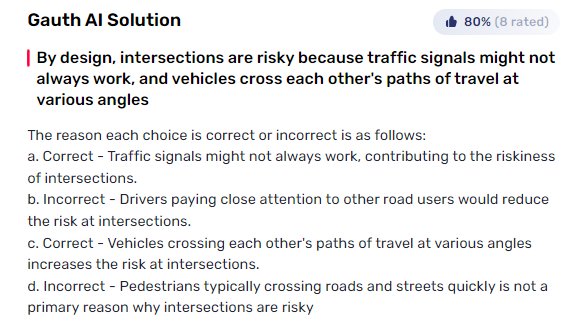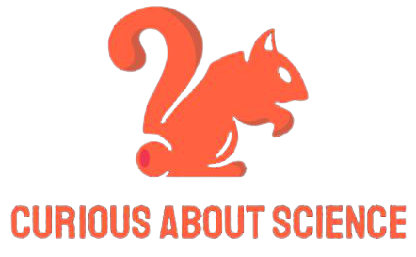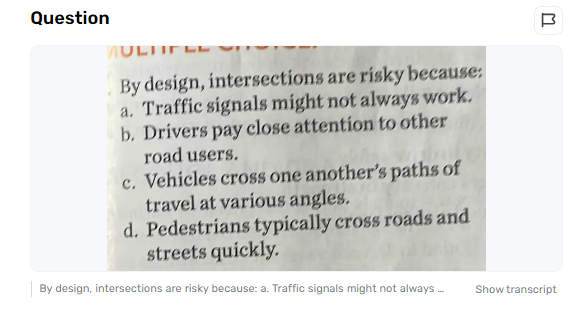From one end of the globe to the other, streets and parkways frequently feature crossing points. They are fundamental for the progression of traffic and for vehicles to take a different path, however, they can likewise be positive or negative for drivers, walkers, and the street’s general security. Understanding these impacts is essential for minimizing potential risks and maximizing efficiency for city planners, engineers, and drivers alike.
Additionally, they provide designated crossing areas for pedestrians, enhancing pedestrian safety. Nonetheless, intersections can likewise introduce difficulties like an expanded gamble of mishaps, particularly when drivers neglect to yield or run red lights. Additionally, by design intersections are risky because drivers may experience delays and frustration at intersections, especially during peak traffic times.
Positive Effects of Intersections on Streets
Intersections on streets play a significant part in working with the smooth progression of traffic and guaranteeing the well-being of drivers and people on foot. In spite of the potential difficulties they might present, intersections likewise deliver various positive effects that add to the productive working of our street frameworks.
Further developed Traffic Stream
One of the critical advantages of intersections is their capacity to manage the development of vehicles at intersections. Intersections aid in traffic flow management and prevent chaos on the road by providing designated points where roads meet. Traffic signals, stop signs, and traffic circles are normal elements at intersections.
Increased Security
By providing specific zones where vehicles can turn, change lanes, and cross paths with other vehicles, intersections are intended to improve safety. Traffic signals and street signs assist with controlling the development of vehicles and ready drivers for likely dangers, decreasing the gamble of mishaps.
Proficient Steering
Intersections act as essential places where various streets unite, permitting drivers to get to different objections effortlessly. By giving availability between various courses, crossing points empower productive steering and route, decreasing travel times and further developing openness.
Further Developed Traffic The Board
Crossing points are fundamental for powerful traffic executives, as they permit traffic architects to carry out measures that upgrade the progression of vehicles and limit delays. At intersections, traffic signals, lane markings, and signage help motorists navigate complicated junctions, prevent conflicts, and ensure a smooth transition between roadways.
Adverse Consequences of Intersections
Crossing points are a fundamental part of the street foundation, permitting traffic to stream without a hitch and securely. However, despite their advantages, intersections also have drawbacks for motorists and pedestrians alike on the road.
Congested Traffic
Increased traffic congestion is one of the most significant negative effects of intersections on roads. When multiple roads meet, there may be a lot of cars waiting to get through, especially at rush hour. This clog can bring about delays for drivers, longer travel times, and disappointment among drivers.
Interruption to Traffic Stream
The disruption they cause to the flow of traffic is another negative effect that intersections have on roads. At intersections, when cars have to stop or slow down, it can cause traffic jams that slow down traffic in general. In addition to creating congestion, this disruption also reduces the effectiveness of the road network and lengthens motorist travel times.
Effects on the Environment
Roads can also be negatively impacted by intersections for the environment. At intersections, idling vehicles emit harmful emissions that contribute to air pollution and greenhouse gas emissions. The expanded blockage and unpredictable traffic at intersections can additionally deteriorate air quality and ecological debasement in metropolitan regions.
Significant Expenses for Upkeep
Keeping up with intersections can be expensive for transportation specialists. The mileage brought about by weighty traffic volumes, regular stops, and starts at intersections can prompt the decay of street surfaces, traffic lights, and signage. Work on maintenance, upgrades, and repairs at intersections consumes a lot of time and money, which raises the overall cost of road infrastructure.
Moves toward Using Gauth
Utilizing Gauth simulated intelligence is a straightforward and proficient cycle that can assist you with tracking down answers for a great many issues.
Step 1. Add your Question
Entering your query into the platform’s search bar is the first step. This can be an inquiry, a theme you want assistance with, or any sort of data you are searching for.
Step 2. Wait and Use the Free Trial
When you input your query you will be asked to use the free trial for accessing the solution. Then, you have to wait a little while processing.
Step 3. Get the Solution
When man-made intelligence has handled your question, you will be given an answer. This could be as a composed reaction, a rundown of assets, a perception, or whatever other configuration that is generally pertinent to your inquiry.

Ending Talk
It is abundantly clear that intersections are an essential component of our road networks because they facilitate the smooth movement of traffic and increase accessibility. Be that as it may, they additionally accompany their own arrangement of difficulties, like expanded clogs and the potential for mishaps. Networks really should cautiously consider the plan and the executives of intersections to boost their advantages while limiting their adverse consequences.









